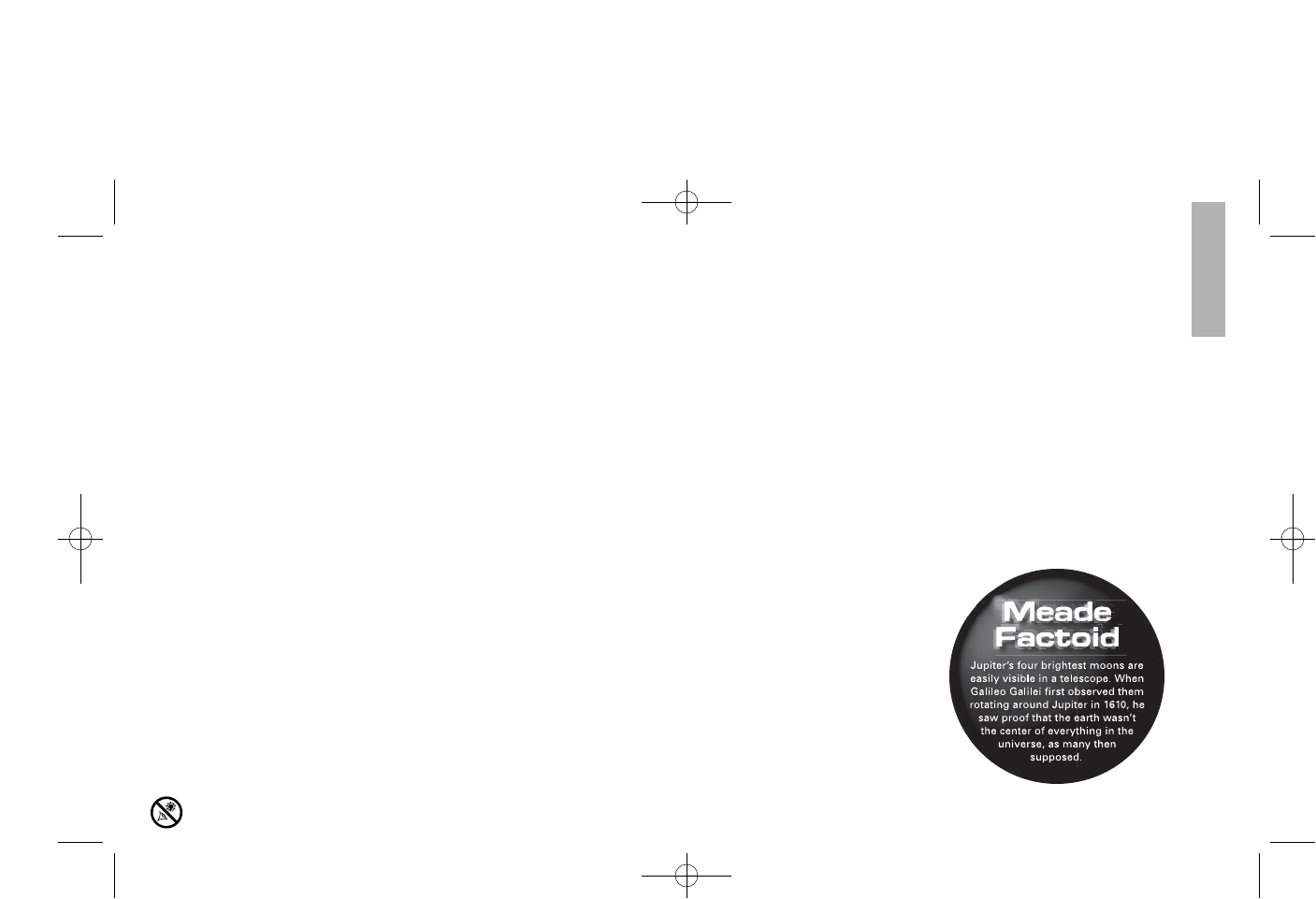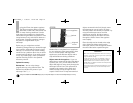
Meade as an optional accessory and
enhance contrast to improve your
observation of lunar features. Spend several
nights observing the Moon. Some nights, the
Moon is so bright that it makes other objects
in the sky difficult to see. These are nights
that are excellent for lunar observation.
Observe the Solar System: After observing
the Moon, you are ready to step up to the
next level of observation, the planets.
There are four planets that you can easily
observe in your telescope: Venus, Mars,
Jupiter and Saturn.
Nine planets (maybe more!) travel in a fairly
circular pattern around our Sun. Any system
of planets orbiting one or more stars is
called a solar system. Our Sun, by the way,
is a single, yellow dwarf star. It is average as
far as stars go and is a middle aged star.
Beyond the planets are clouds of comets, icy
planetoids and other debris left over from
the birth of our sun. Recently astronomers
have found large objects in this area and
they may increase the number of planets in
our solar system.
The four planets closest to the Sun are rocky
and are called the inner planets. Mercury,
Venus, Earth and Mars comprise the inner
planets. Venus and Mars can be easily seen
in your telescope.
Venus is seen before dawn or after sunset,
because it is close to the Sun. You can
observe Venus going through crescent
phases. But you cannot see any surface
detail on Venus because it has a very thick
atmosphere of gas.
When Mars is close to the Earth, you can see
some details on Mars, and sometimes even
Mars’ polar caps. But quite often, Mars is
further away and just appears as a red dot
with some dark lines crisscrossing it.
Jupiter, Saturn, Uranus, Neptune and Pluto
comprise the outer planets. These planets,
except for Pluto, are made mostly of gases
and are sometimes called gas giants. If they
had grown much bigger, they may have
become stars. Pluto is made mostly of ice.
Jupiter is quite interesting to observe. You
can see bands across the face of Jupiter. The
more time you spend observing these bands,
the more details you will be able to see.
One of the most fascinating sights of
Jupiter are its moons. The four largest
moons are called the Galilean moons, after
the astronomer Galileo, who observed them
for the first time. If you’ve never watched the
Galilean moons in your telescope before,
you’re missing a real treat! Each night, the
moons appear in different positions around
the Jovian sky. This is sometimes called the
Galilean dance. On any given night, you
might be able to see the shadow of a moon
on the face of Jupiter, see one moon eclipse
another or even see a moon emerge from
7
Looking at or near the Sunwill cause irreversibledamage to your eye. Do not point this telescope at or near the Sun. Do not look through the telescope as it is moving.
Tel70AZAR_5 3/28/07 10:09 AM Page 9


















